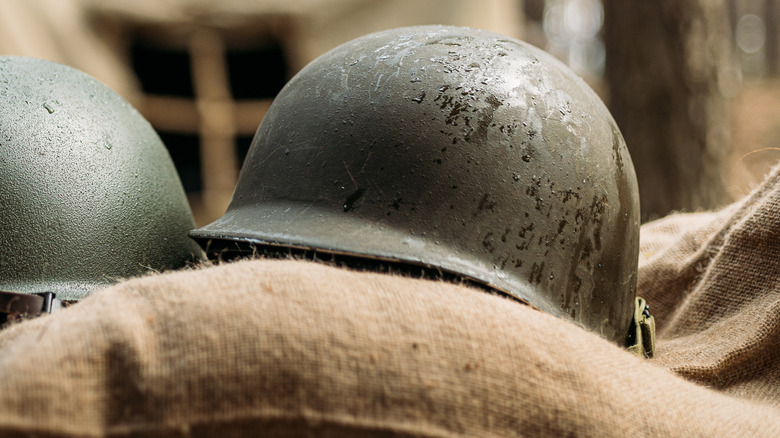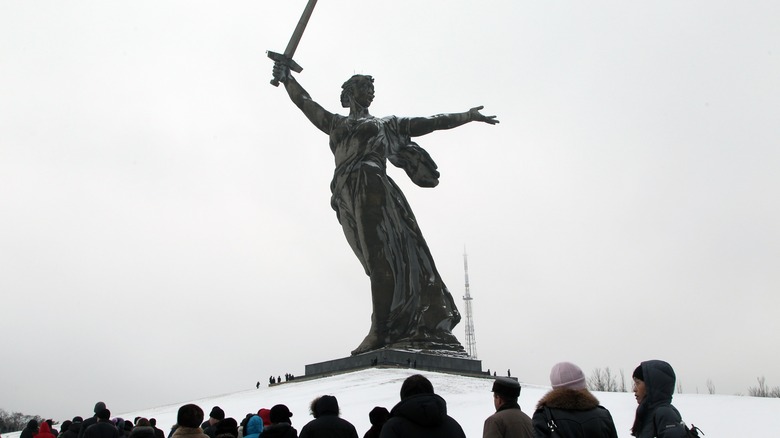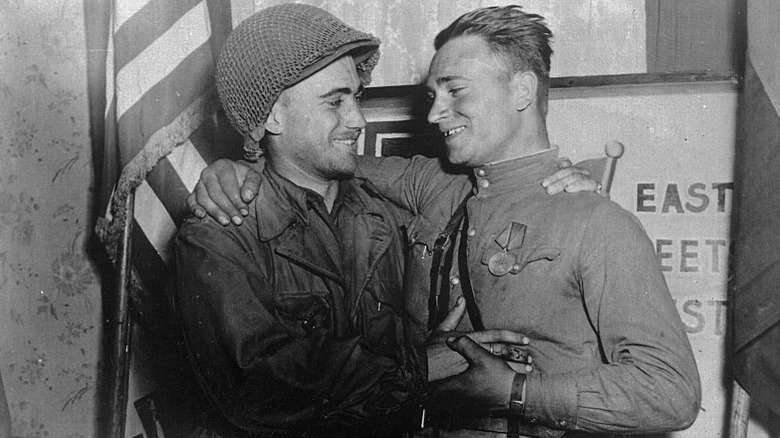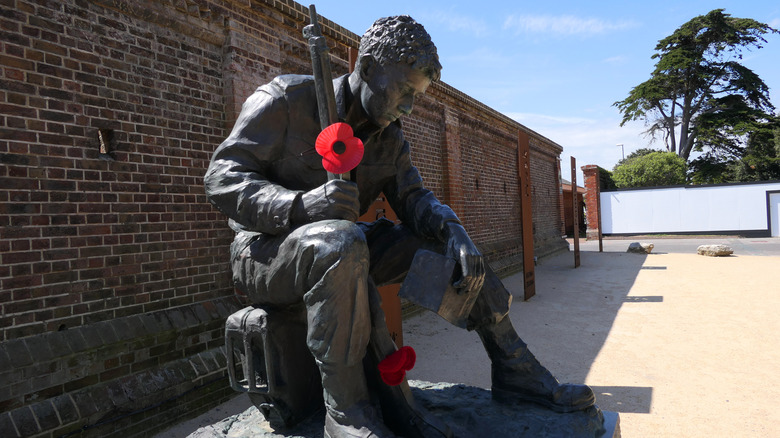Two WWII Allies Had A Meeting That Turned Into An Unofficial Holiday
World War II was a conflict that truly reverberated across the globe. It caused death and destruction on an unprecedented scale: around 40 million to 50 million people are estimated to have died during the war, per Britannica, and the true figure could be even higher.
It was a traumatic conflict, one that brought out the very worst of the human spirit in some. Greed, cruelty, viciousness, callousness and selfishness were rife. Friendships and family ties were torn asunder, as alliances were formed and lost and desperation set in. At the same time, though, some bonds cannot be broken. Some found depth of spirit and humanity they may not even have known that they possessed, and the most unlikely and binding of friendships resulted.
The world has rarely known circumstances as trying as these, and so it has rarely been so important for such friendships and alliances to be fostered. Among the Allied powers, a serendipitous meeting actually became an unofficial holiday. Here's how it happened.
World War II brought catastrophic suffering
Britannica goes on to state that the then-Soviet Union saw the most deaths: around 18 million. The U.S.S.R. was embroiled in some of the deadliest and most horrifying battles of World War II. Chief among them was the catastrophic and costly Battle of Stalingrad. Per History, this battle began in August of 1942 and raged for around six months. The relentless close-quarters fighting in the city, as areas changed hands between the Allies and Axis powers, resulted in around 2 million deaths. Tens of thousands of those who died were civilians.
The United States suffered around 298,000 deaths during World War II, per Britannica, having joined the conflict in December of 1941 following the attack on Pearl Harbor (via World Atlas). Both nations had a tremendous part to play in the Allies' eventual victory, and in shaping the future of the world afterward.
In countless ways, all over the world, the price of the freedom won in World War II and the sacrifices of those who fought for it continues to be commemorated. On the unofficial Elbe Day, we remember an historic encounter between forces of the U.S. and U.S.S.R. as they marched inwards towards Berlin and the war's end.
What happened on Elbe Day?
The closing acts of the war saw Germany facing a formidable invasion on two fronts: The U.S. and the U.S.S.R.'s Red Army each approached from their opposite ends of the world. The upper hand in the war had swung one way and then the other countless times, but from here, the momentum of this two-pronged assault seemed unstoppable.
As On This Day reports, the two armies met near the Elbe River, in Torgau, Germany, on April 25, 1945. For a world desperate to see the end of this bitter bloodshed, it was a remarkable moment, and a highly significant point in the relationship between the nations to boot. Naturally, quite a fuss was made of the encounter, per Rare Historical Photos: this image shows Lieutenants Bill Robertson (U.S., left) and Alexander Silvashko (U.S.S.R, right) embracing in a shot that was reportedly taken the day following the meeting. Each man had been part of a small reconnaissance group for their respective armies when they had met on April 25, and the governments of the Allies soon seized upon the opportunity.
President Truman said of the encounter (per Rare Historical Photos) that though the war wasn't won just yet, "the hour draws near, the hour for which all the American people, all the British people, and all the Soviet people have toiled and prayed so long."
The enduring spirit of friendship and victory
Around two weeks later, an event that rather took the focus from Elbe Day took place: VE (Victory in Europe) Day. Per Imperial War Museum, the date marked Germany's unconditional surrender on May 8, 1945 (though Japan would not surrender for another three months).
Elbe Day may be an unofficial holiday, but it continues to be remembered. In 1985, per AP News, four of the American soldiers who met their Soviet counterparts on that day in 1945 met in a Capitol Hill pub for the filming of a new show about the conflict. The Americans remembered taking fire from their Allies at first, who didn't recognize them, until they were able to salvage a bed sheet and some colored dyes from the surrounding buildings, which enabled them to hastily throw together the Stars and Stripes (even if they didn't have any blue for the stars) so the Russians would recognize them.
Corporal James McDonnell (who had become the deputy fire chief of Peabody, Massachusetts) summed up their immediate friendship beautifully. "We couldn't speak Russian, and they couldn't speak English, but the hugs and the handshakes said it all," he concluded. Another of the soldiers who had been there, per Rare Historical Photos, tried to use the memory of that fateful day to diffuse Cold War tensions by suggesting to the United Nations that April 25 be declared a "Day of Peace," to no effect.



